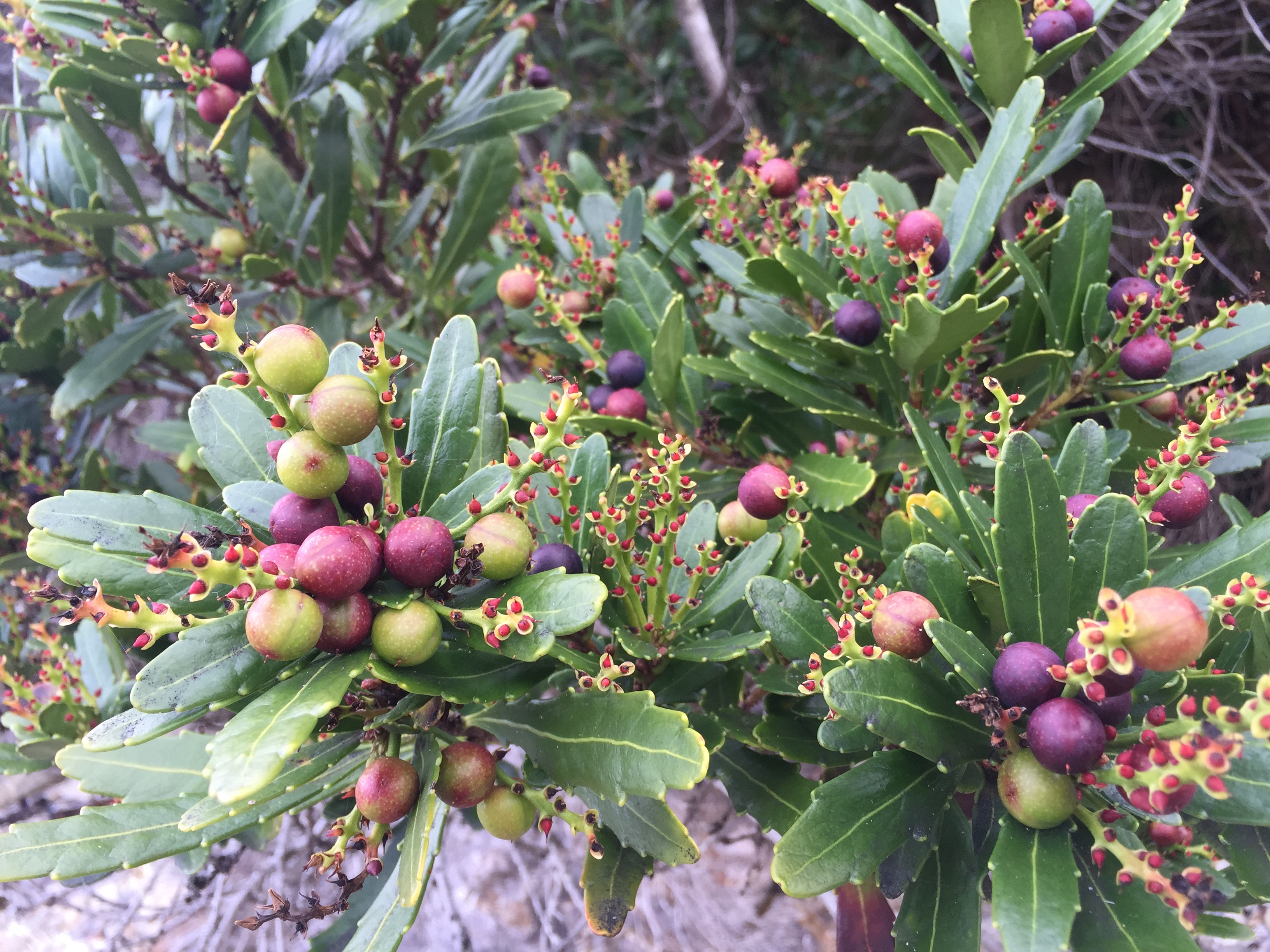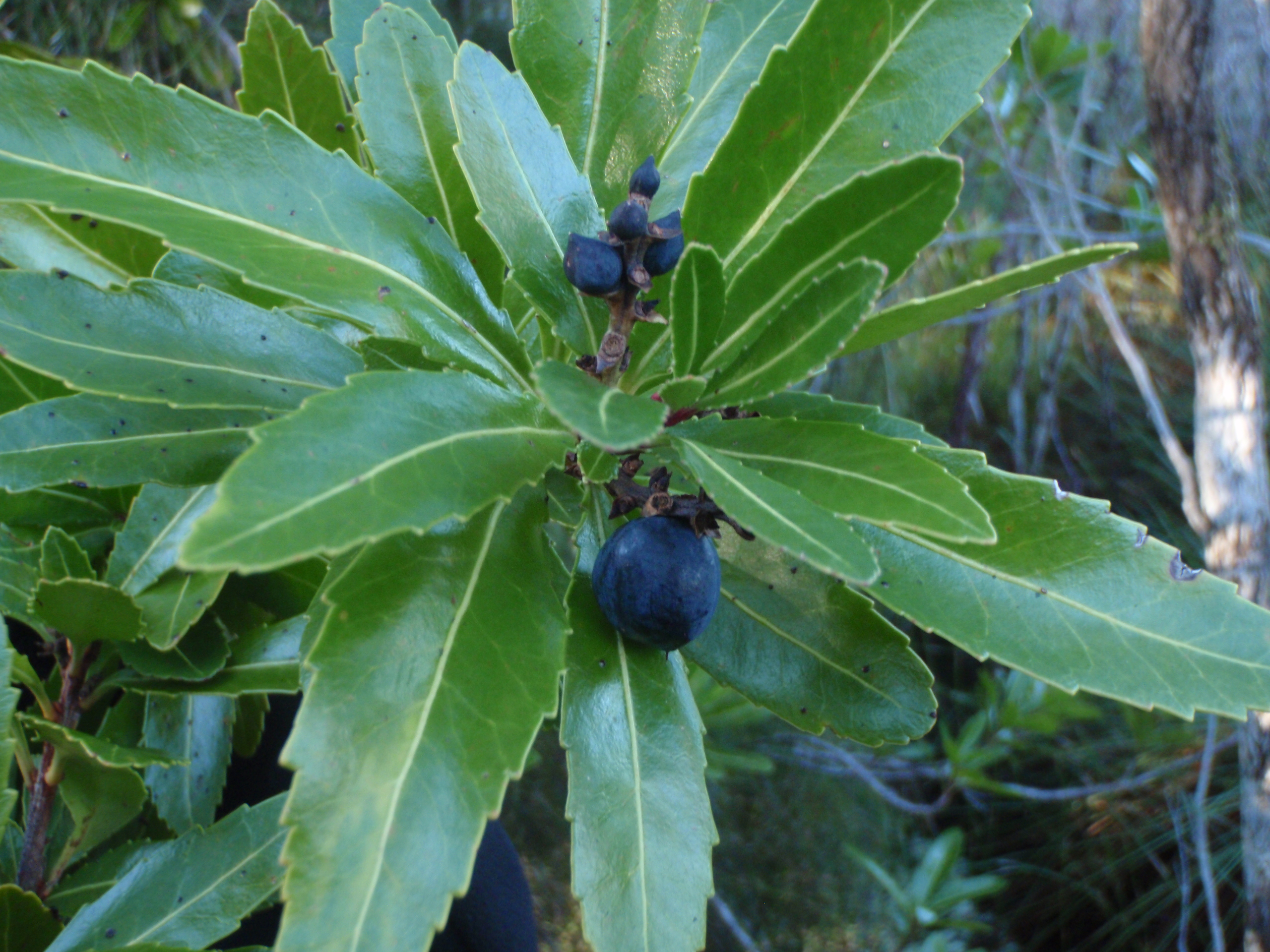Scientific Name: Cenarrhenes nitida Endemic Having a natural distribution confined to a particular geographic region
Common Name: native plum
Family Classification (Clade): Eudicots
Family: Proteaceae
Form Description: Spreading shrub or small tree. Leaves have a nauseating smell when crushed.
Height (m): 1 – 8
Flowers: White, on short spikes amongst leaves. Petals thick, waxy. Anthers with spring mechanism.
Fruit: Drupe – large, purple, spherical, 1.0–1.5 cm diameter.
Municipality
Plant Communities
Habitat Notes
Local in rainforests of the Central Plateau and the south-west and west coasts. A small tree in rainforest on poor sites and understorey shrub in wet eucalypt forest. It also occurs in scrub and heath on poor soils in the wettest parts of the state, extending into the margin of the alpine zone.
Site Tolerance
Moist, Shady
Soil Tolerance
Fertile, Loam, Nutrient-poor, Poorly-drained, Well-drained
Frost Tolerance
Moderate
General Notes
Cultivation has proved very challenging. Plants are difficult to propagate and then grow very slowly. Requires well-composted soil in shade. Susceptible to Phytophthora cinnamomi.
Propagation Calendar
-
Flowering Month
Jan Feb Mar Apr May Jun Jul Aug Sep Oct Nov Dec -
Seed Collecting Month
Jan Feb Mar Apr May Jun Jul Aug Sep Oct Nov Dec -
Sowing Month
Jan Feb Mar Apr May Jun Jul Aug Sep Oct Nov Dec -
Cutting Month
Jan Feb Mar Apr May Jun Jul Aug Sep Oct Nov Dec
Propagation Method
Seed Information
Seed Collection
Difficult to propagate. Fruits are ripe when outer coverings are dry. Outer coverings should be removed and nuts stored in a cool well-ventilated place.
Seed Treatment Method
Standard Scatter seed thinly on to damp potting mix. Hold seed in place by covering with more potting mix to approximately the depth of the seed size.
Seed Treatment Notes
Plants are difficult to propagate and then grow very slowly.


